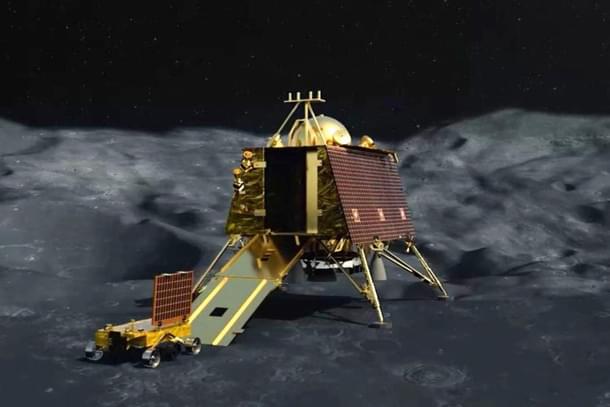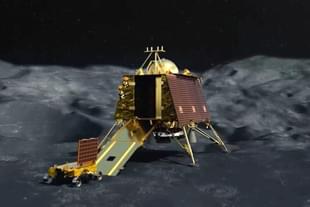News Brief
Chandrayaan-4: All About India’s First Lunar Sample Return Mission Set For 2027 Launch
Kuldeep Negi
Mar 20, 2025, 10:42 AM | Updated 10:42 AM IST
Save & read from anywhere!
Bookmark stories for easy access on any device or the Swarajya app.


India is expected to launch it fourth lunar mission, Chandrayaan-4, to collect and return the lunar surface samples to earth by October 2027, Union Minister of State for Space Jitendra Singh said on Wednesday (19 March).
In reply to a question in the Lok Sabha, Singh revealed crucial details about the upcoming Chandrayaan-4 mission.
The mission, which will feature multiple advanced docking technology and lunar sample collection, is poised to be a major step toward India’s goal of establishing its own space station by 2040.
Highlighting the importance of Chandrayaan-4 in strengthening India's space capabilities, Singh said, “This mission will not just be about landing on the Moon but also about mastering docking and undocking procedures, a key requirement for future interplanetary missions and space station operations".
The minister further noted that India’s long-term objective includes sending an Indian astronaut to the Moon, with Chandrayaan-4 serving as a precursor to that historic feat.
He also informed that the government had sanctioned the Chandrayaan-4 mission at a cost of Rs 2,104 crore.
Singh said that the India has been "systematically exploring the Lunar surface through the past missions and advancing various technologies".
"The Chandrayaan-4 mission is the next mission to be realized for exploration of the moon," he added.
According to the minister, the key objectives of the Chandrayaan-4 mission will include:
I. To demonstrate key first level technologies for future crewed mission to Moon.
II. To provide opportunities to study the lunar samples in greater detail, scientifically, compared to which the lander and rover mission could do in-situ.
III. To inform and gain valuable experience to undertake future planetary missions including crewed missions.
IV. To further the strides achieved in advancing lunar science within the country.
V. To enhance the technological and scientific capability of the country and aid to cement international presence in such prestigious endeavours.
"The mission is targeted to be launched during October 2027," Singh added.
The mission will involve two launch vehicles carrying five components in total. These modules will execute complex manoeuvres, including docking in Earth’s orbit before proceeding to the Moon.
Upon reaching lunar orbit, the modules will separate, with the descender collecting samples while the ascender returns to dock with the remaining modules.
The return module will then make its way back to Earth, simulating key aspects of crewed lunar missions.
Kuldeep is Senior Editor (Newsroom) at Swarajya. He tweets at @kaydnegi.





